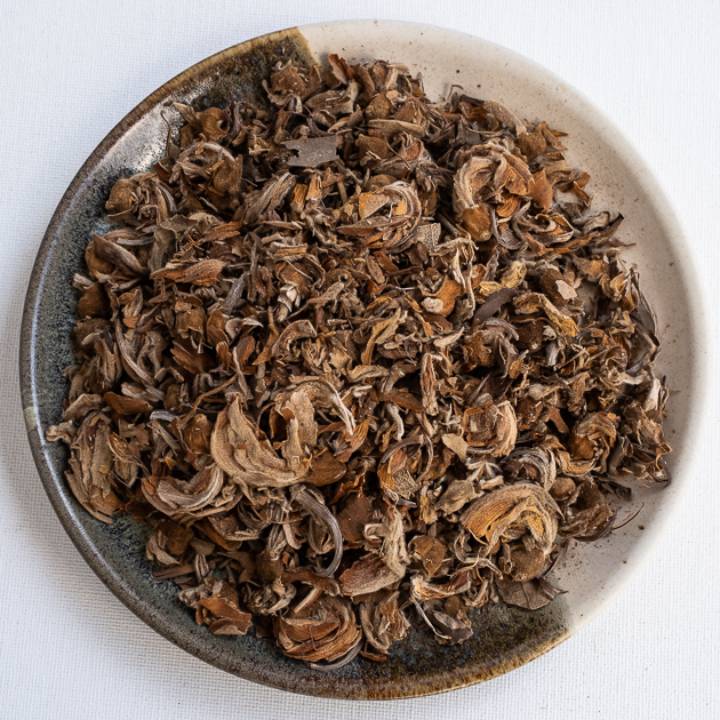Natural Dyes

One of our objectives in setting up Himalayan Weavers was to promote the use of natural dyes. As Pat and I did not have any knowledge of or expertise in dyeing, we learnt the basics from the internet. The first lot we dyed was about 2 kilograms of hand spun wool we had bought from a Bhotia family in Dunda village near Uttarkashi. We dyed it red with madder which we bought from a seller of Auyrvedic materials in Dehradun
The actual dyeing was done in our kitchen in Masrana, near Mussoorie. We took the dyed yarn to a weaver in a nearby town, Dhanaulti, and got a few scarves hand-woven to Pat’s designs. Encouraged by our success with madder, we tried other materials including tesu (flame of the forest) flowers, henna, pomegranate reed and catechu.
Dyes Chart
We use the following natural dyes

madder (Rubia cordifolia)



madder (Rubia cordifolia)









Indigo (Indigofera tinctoria)



Indigo (Indigofera tinctoria)









Shellac (Laccifer lacca)



Shellac (Laccifer Lacca)









tesu flowers (Butea Monosperma)



tesu flowers (Butea Monosperma)









sappanwood (Caesalpinia sappan)



sappanwood (Caesalpinia sappan)









harada (Terminalia chebula)



harada (Terminalia chebula)









tea (Camellia sinensis)



tea (Camellia sinensis)






How We Use Natural Dyes


We began dyeing wool yarn in small pans, heating the dye bath on a domestic gas burner. However, we found that heating the dye bath on an open gas flame resulted in considerable loss of heat and energy. As a more energy-efficient alternative, we tried cold dyeing in which we left the wool in a bucket at room temperature for a few days. Although successful for most dyes, this method was not practical for large scale dyeing. We would have needed hundreds of buckets and a lot of space to keep them. So, this also was not a good way to dye the large amounts of wool we would need to run a business.Our next attempt was to build tanks with immersion heaters and thermostats. The tanks were insulated with high-quality insulation sheets to conserve heat, and that reduced our consumption of electricity. But we faced another problem! The temperature of the dye bath was higher near the heater (bottom) and lower at the top.
This caused some unevenness in dye absorption and colour shade. Although the results were acceptable on the whole, we were not very satisfied. Then about four years ago we hit upon the idea of wrapping electric blankets around recycled 100 litre tanks and covering these with insulation sheets. These blankets keep the dye bath uniformly warm and produce dyed yarn of excellent quality. Also, as the blankets consume very little electricity, and there is no heat loss from the tank, the system is highly energy efficient. We have about 10 tanks, one for each dye, and we use the same dye bath for many months. As we don’t replace dye baths frequently, this saves a lot of water. On the whole we are very satisfied with our new system. It is simple, resource-efficient, and produces dyed yarn of excellent quality.



